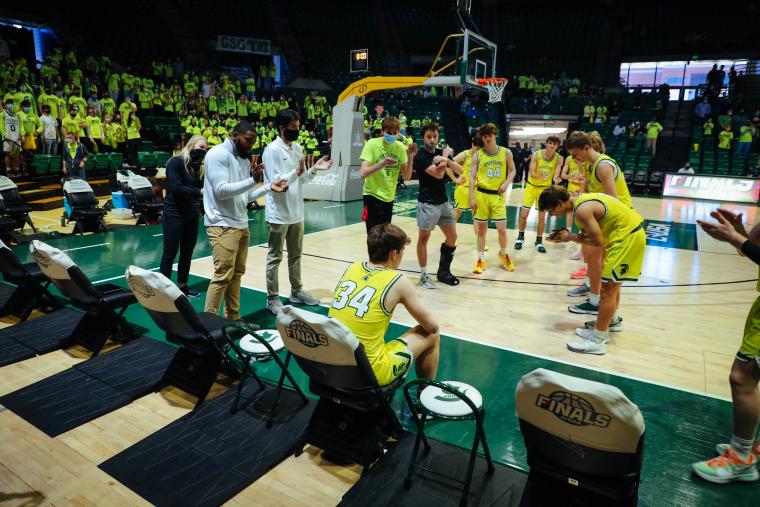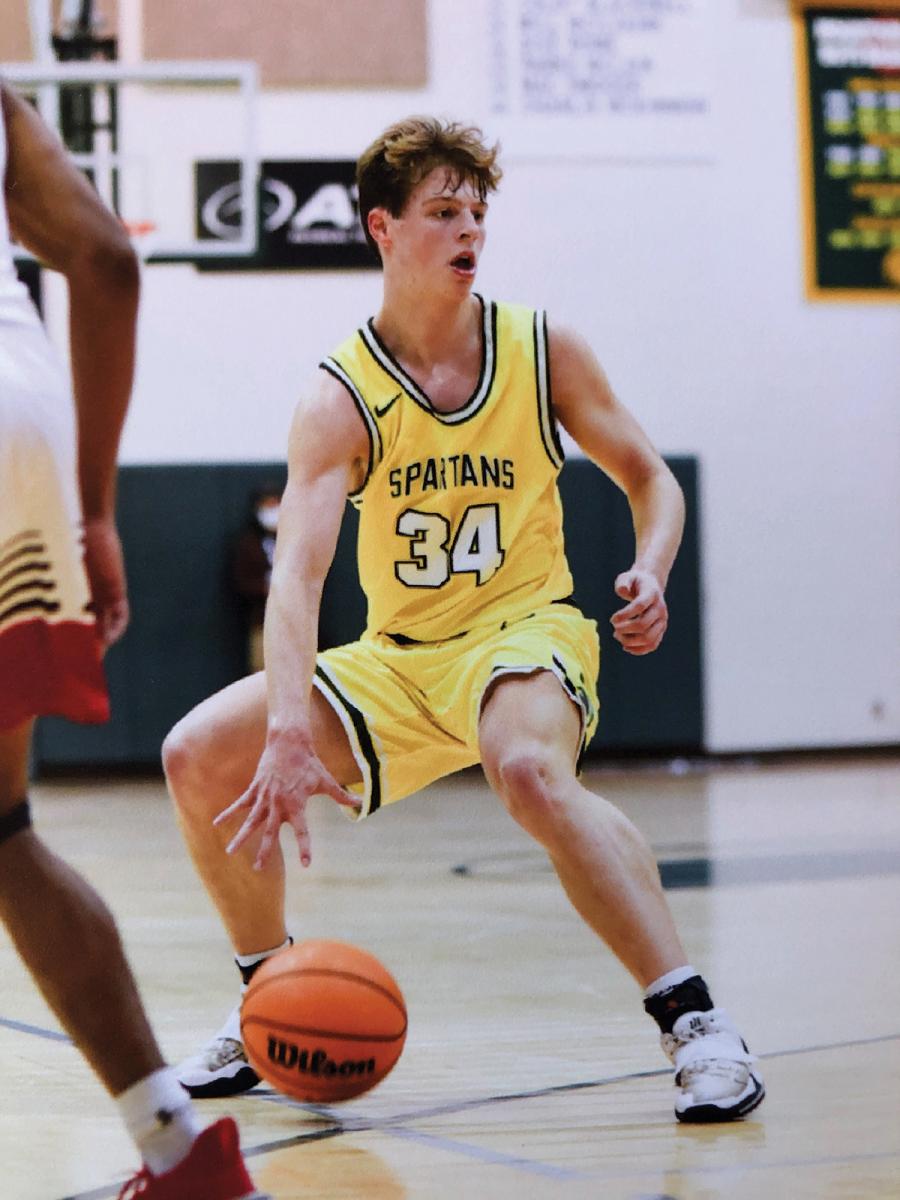

The youth sports world is more than ready to surge forward. What it has been lacking, however, has been a template.
Right now, Alabama might just be that template. The high schools of Alabama have been putting on games and championships throughout the year and according to Jamie Lee, director of the Alabama High School Athletic Directors & Coaches Association, those games and championships have been running on time and without incident. Because, he noted, even with modifications, it was essential to offer the opportunity to play.
“We may be doing things differently from a COVID standpoint but when the game starts, it’s still just a game. Those students will never have that high school experience again. We wanted to give them something to remember.”
Because of precautions – mandatory masks unless in active play (and allowed in play if an individual player felt more comfortable that way), social distancing, setting spectator capacities and establishing regular cleaning of facilities – entire seasons of play, on schedule and without interruption, were possible.
“We have been very fortunate,” said Lee, “going all the way back to the fall. With a lot of work from a lot of different people, we had football, volleyball, cross country, just like a normal year but with precautions in place. We had championships in every sport we offered. We were able to have a normal sports year in Alabama. And overall, it has been a great year.”
Alabama’s comprehensive list of sports – just in case you needed to know – include:
• Baseball• Basketball• Bowling• Cheer• Cross Country• Esports• Football• Golf• ndoor Track & Field• Outdoor Track & Field• Soccer• Softball• Swimming & Diving• Tennis• Volleyball • Wrestling
Alabama worked to implement a strong system of health guidelines, including those recommended by the CDC as well as the National Federation of State High School Associations.
By tinkering with the placement of teams, for example, it was possible to allow for full sideline support.
“In a normal wrestling season, for example, we might have the coaches and the entire team on the benches right next to the mat,” said Lee. “This year, they sat up in the stands. Little things like that were what we did to help limit contact.”
Plans started, he noted, not in 2021 but in 2020.
“All the way back to when this started over a year ago, we were talking to the Alabama Department of Public Health, looking at the CDC guidelines and meeting with coaches and athletic directors across the state. We were working on developing best practices and putting them in place and figuring out exactly how we were going to do each sport.”
The efforts did not go unnoticed said Daniel Smith, director of events with Knight Eady, which partnered with the Alabama High School Athletic Association to help produce some of those championships. Knight Eady has been working with the association since 2015 as an event management partner. It has a full slate of additional credits, including working with the 2017 National Senior Games in Birmingham, Alabama; the NCAA National Collegiate Women’s Gymnastics Championships in 2015 and 2016 in Fort Worth, Texas; and the 2019 U.S. Women’s Open at the Country Club of Charleston in Charleston, South Carolina.
“We’ve created some really strong partnerships,” says Smith. “We’ve been very fortunate.”
As a result of the planning, strategy and – yes, its partnerships, the Alabama High School Athletic Association and, as a result, Alabama’s high schools were forging ahead while other states were still dithering about what to do and how to do it.
“We are thankful the association was a leader when it came to high school sports this past year,” said Smith. “They were putting things in place, working with the medical advisory board to have a full football season – and they were keeping that trend going throughout the basketball season as well. They were willing to really step up and be a partner for high school athletics. And after last spring, they really wanted to do everything possible to have a full season for each of these students.”
“We were willing to go out on that limb,” agreed Lee. “We really wanted to do this.”
What else did Alabama’s athletic officials do right? They created positive, well-thought-out rules and enforced them in order to create a healthful atmosphere for all events. And, said both Lee and Smith, students, officials and spectators were willing to follow those directives.
“I would say there was a lot of gratitude on the part of the students and their parents,” said Smith. “A lot of times, organizations get the brunt of the pushback, and of course, you’re going to have people on both sides of the fence. But rules were in place and people were willing to follow them because they wanted to be here – they wanted that experience of playing.”
Another factor in Alabama high schools’ success was working with the correct venues. By using the large-scale university facilities in Birmingham, Tuscaloosa and Auburn, it was possible for high school championships to host a much larger number of spectators. Even with capacity limitations that varied according to city and venue, creating the right environment was never a problem.
Having a school year with championships that went off according to a traditional schedule might be looked at by other states as a miracle. For Alabama, it was the outcome of months of planning and meticulous attention to detail. And it shows.
“They are rocking and rolling,” said Smith. “They’re not having to worry about rescheduling games. All three cities helped us do this, by opening up their venues and resources to us. We could not have done it without them, and we’re very thankful they were a part of it.”
Lee said the Alabama High School Athletic Association worked to adjust the formats of some of its championships so as to avoid bringing too many athletes together at one time. By simply using more facilities, spreading championships over more days and other ways of staggering groups of athletes, it was possible to create a better environment while still generating a championship experience for students who had worked so hard to achieve it.
“Rather than having, for example, 1,000 athletes getting together to compete in the indoor track & field championships, we divided it into three different groups, so that you had between 300 and 350 athletes at a time. For our basketball tournament, we used to have a six-day event with eight games per day playing for the first three days, then six games per day on the last three days. This year, we used two facilities and played four games per day, and before and after each game, we emptied the facilities, cleaned the seats, benches, floors and restrooms before we opened the doors to the next group.”
None of which, he adds, would have been possible without everyone being on board from the beginning.
“We feel very fortunate. We had multiple committees that met about how to conduct specific sports. We also had administrators, and we were looking at all the guidelines. You have to have buy-in from everyone to make this work, and we had that. Everyone really did a great job. We might have set the standard, but our schools did a phenomenal job.”
Alabama’s dedication to its students runs deep, says Smith. The COVID-19 pandemic might have put a damper on sports last year, but it made officials even more determined to move forward this year.
“After last spring, they wanted to do everything possible to have a full season for each of these students,” he notes. “This is their four years of playing time. Many do not go on to play at the next level. We did not want to take their championship moment away.”
The lack of ability to play last year also seemed to have hardened students’ resolve to do what it took in order to play.
“All of our championships have been held in accordance with the CDC guidelines,” said Smith. “We have followed everything we needed to. I’d say it brought some challenges, but the students have bought into it because they know that if they don’t follow those guidelines, they can’t play. And they really want to play.”
Working through the difficulties, accepting the rules and pushing forward throughout the season made the championship experience even more special and meaningful, he noted.
“They crowned champions but this year, it just means a little bit more. It wasn’t necessarily the celebration or anything they said – not even the spoken word. It was a reaction you got to see from the students. The first time they got to walk inside that stadium and, for example, went into Alabama’s locker room. There was this joy on their face. They’d worked so hard to get to that point and what you saw was all that passion and all that emption. It made it all worthwhile.” SDM

